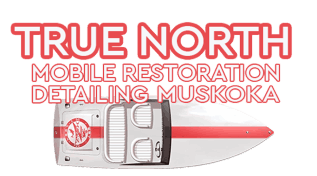When it comes to detailing, boats and cars may seem similar at first glance—both require cleaning, polishing, and protection. However, the techniques and products used can vary significantly due to different materials, environments, and wear factors. Whether you’re a boat owner looking for the best boat exterior cleaner or a car enthusiast comparing auto detailing vs. boat detailing, understanding these differences is crucial for maintaining your investment.
Exterior Surfaces: Gel Coat vs. Automotive Paint
One of the biggest differences between detailing a boat and a car lies in their exterior surfaces. Boats typically have a gel coat, a thick, durable resin layer that protects the fiberglass underneath. Cars, on the other hand, have automotive paint with a clear coat.
-
Gel coat is more porous and prone to oxidation, requiring specialized marine-grade wax and UV protection to prevent fading.
-
Automotive paint is smoother but can suffer from scratches and swirl marks, often needing paint correction techniques.
For water spots removal (boats vs. cars), boats face harsher conditions due to saltwater and mineral deposits, requiring stronger cleaners. A high-quality boat exterior cleaner is essential to break down tough stains without damaging the gel coat.
Interior Cleaning: Marine Fabrics vs. Automotive Upholstery
Boat interior cleaning is a whole different ballgame compared to car interiors. Boats deal with constant moisture, mold, and mildew, while cars mostly face dirt, spills, and UV damage.
-
Marine upholstery needs anti-microbial treatments to prevent mold growth.
-
Car interiors benefit from fabric protectants and leather conditioners.
Using the wrong products can damage materials, so always choose best boat cleaning products designed for marine use.
Environmental Challenges: Saltwater & UV Exposure
Boats battle saltwater corrosion prevention, while cars mainly deal with road grime and pollutants.
-
Saltwater can corrode metal fittings and degrade surfaces quickly, requiring frequent rinsing and protective coatings.
-
UV protection for boats is critical since prolonged sun exposure breaks down gel coat and vinyl faster than automotive paint.
For long-term protection, consider ceramic coating for boats and cars, though marine-grade formulas are typically more robust.
Tools & Techniques: Specialized Equipment Matters
-
Detailing brushes for boats need to be salt-resistant and gentle on delicate surfaces.
-
Cars may require softer brushes to avoid scratching clear coats.
Storage & Maintenance: Keeping Your Boat in Top Shape
How you store your boat impacts its longevity. Unlike cars, boats need proper ventilation to prevent moisture buildup. Using the best sealant for boats and cars can help, but marine-specific products offer better protection against humidity.
Final Thoughts
While car vs. boat detailing share some similarities, the materials and environmental challenges require different approaches. Whether you’re choosing a boat exterior cleaner or comparing gel coat vs. automotive paint, always opt for products designed for the job.
By following these boat detailing tips, you’ll keep your vessel looking pristine while avoiding common mistakes. And if you’re detailing both, remember—what works for your car may not be safe for your boat!
Need the best way to protect boat surfaces? Invest in high-quality marine-grade wax and ceramic coating for boats and cars to ensure long-lasting shine and durability.
